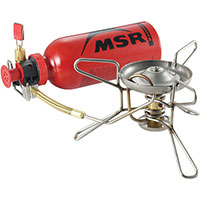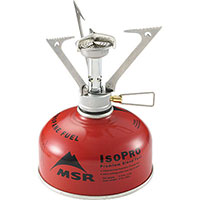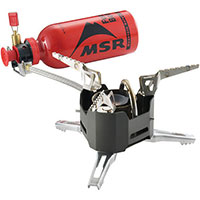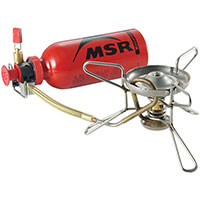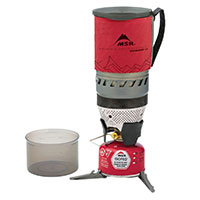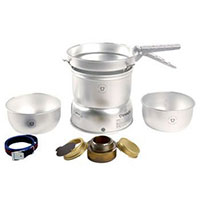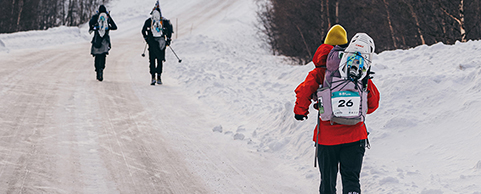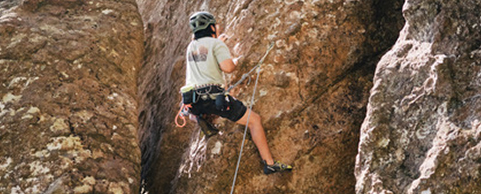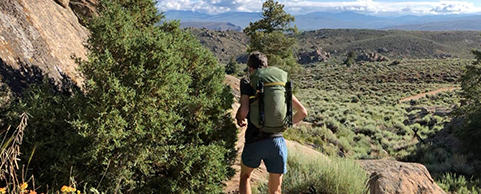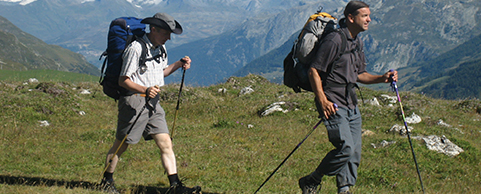Selecting the Right Hiking Stove
Which is the best backpacking stove?
Every backpacking stove offers different benefits when it comes to versatility, size, weight, fuel efficiency and boil time. As a result, there is no one best stove when it comes to choosing a stove for your outdoor trips.
Many outdoor enthusiasts own several pots and stoves because there is often no combination of stove accessories that is the best option for every situation. If you're planning an upcoming trip, you want to make sure that you select the right stove for your needs.
How to select the best hiking stove for your needs
First, think about what you will be using the stove for. Do you enjoy multiday bushwalks in Tasmania's remote wilderness? Or do you prefer weekend hikes at Wilsons Prom? Will you be taking your stove mountaineering?
Depending on what you're using the hiking stove for, you can then decide which type of stove you might need. There are two basic types: gas or liquid fuel.
To help you decide which is the better option for your circumstances, we've explored a few scenarios below.
Best Hiking Stove for Extended Bushwalks
We recommend: MSR WhisperLite Stove
This stove is ideal for extended bushwalks for a number of reasons.
First, the WhisperLite runs on liquid fuel, which is cheap to buy. Liquid fuel also weighs less per unit of energy, which makes it an ideal fuel for multiday walks.
If you're hiking in an area where you're likely to encounter bad weather, the MSR WhisperLite is a good choice. This is because the WhisperLite still functions in windy, cold conditions. Even when the surrounding air temperature is cold, it works well because liquid fuel burns hot.
You can protect the flame using a windshield, too.
These advantages make the MSR WhisperLite the choice of many experienced bushwalkers.
Its main disadvantage is that many people find it tricky to use. (There's a bit of an art to it.) Once you've got the knack, it's easy. But, there is a learning curve.
Best Hiking Stove for Weekend Trips
MSR Pocket Rocket
Advantages? It's quick, easy and intuitive to use. In fact, it's about as easy to use as a gas stove in a house. You turn the gas on, light it and adjust the flame. The stove itself is also lightweight and relatively cheap to buy.
Disadvantages: You have to use gas cannisters. Each one is a single-use steel cannister, which you then need to dispose of. These cannisters can also be quite heavy, especially if you need to carry a few of them. (Of course, this isn't going to be an issue if you're only camping for one or two nights.)
As you use the cannister, it also loses its pressure. By the time you've used two-thirds of the gas in the cannister, you'll notice a drop-off in performance.
Also, the colder the air temperature around you gets, the worse gas stoves perform. If you bring a gas stove somewhere cold, on a frosty morning you might find yourself cuddling your gas cannister, because you need it warm before you can turn it on to make your morning cup of tea.
Interestingly, though, this doesn't mean that gas stoves can't be used by mountaineers. At altitude (upwards of say 2000-4000 metres), the drop in air pressure changes the relative pressure between the surrounding air and the cannister. When this starts to happen, you'll notice that gas stoves actually start to work efficiently, even though it's cold. (However, 'mountains' in Australia aren't high enough to make a difference.)
Something else you need to be aware of is that gas stoves struggle in windy conditions. That's because wind blows heat away. And, you can't use a windshield with a gas stove. Heat reflects back onto the gas cannister, and that's an explosion risk.
You'll need to consider whether or not these drawbacks are going to affect your particular situation. For instance, if you're hiking somewhere that doesn't get too chilly, and you're going to be sheltered from wind when you camp, maybe this is the stove for you.
Also consider: Soto Micro Regulator Stove
Best Stove for Mountaineering / Cold Environments
We recommend: MSR XGK Stove
You've probably heard an MSR XGK in use. It sounds like an airplane taking off. But, if you're going up to 6000 metres, the XGK is the stove you want. It's built more solidly than other fuel stoves, which makes it a more robust unit for serious expeditions.
It's capable of running on various types of fuel, too. That's handy if you're in a situation, say, where you need to siphon fuel out of a helicopter.
In cold conditions, the XGK works very well. It has a fat fuel line and fat fuel jets, which allows it to release a lot of fuel. This means it's capable of burning very hot. And, when you're in a cold environment, you need a lot more heat to boil water.
Best Stove for Travel
We recommend: MSR WhisperLite International
Heading overseas? Consider the MSR WhisperLite International. Basically it's the MSR WhisperLite, except it runs on multiple types of fuel.
That means, if you find yourself in Sub-Saharan Africa needing fuel for your stove, you won't need to find a specialist store that stocks Shellite. The WhisperLite International can run on car fuel, so all you would need to do is find a petrol station.
This flexibility is a huge advantage if you are, say, cycletouring in Asia or hiking in Patagonia.
Best Stove for One-Person Cooking
We recommend: MSR Windburner Stove System 1LT
The most attractive drawcard of the MSR Windburner is its simplicity. The pot, burner and gas cannister all nest neatly and securely on top of each other. This makes it a compact cooking unit.
The burner's flame, when in use, is entirely enclosed by what's called a heat exchange – a shield fused to the bottom of the pot. This protects the heat from the elements, making the Windburner an extremely efficient stove to use in windy conditions.
It's also a good stove for coffees at the crag. It's the ideal set-up. The 'pot' comes with an insulated cozy and integrated handle. That allows you to eat (noodles?) or drink (coffee?) directly from the pot.
Also, because the stove's flame is so well protected from the wind, the Windburner burns fuel efficiently, making it cheaper to run and quicker to boil.
Also consider: MSR Reactor Gas Stove 1.7LT, Jetboil Flash Cooking System
Best Stove for Beginners
We recommend: Trangia StormCooker Stove
The best thing about the Trangia is that it's an all-in-one set. The StormCooker comes with two pots, a frypan, a handle, two windshields, a burner and a strap to hold it all together. That means you don't need to buy pots and such separately. These extra items also pack neatly into the stove, saving you space and making packing easier.
The second great drawcard for the Trangia, is that it's basically idiotproof. While many people struggle learning to use something like an MSR WhisperLite, a Trangia doesn't require any sort of skill.
It's also very hard to blow yourself up with a Trangia. It operates using methylated spirits. Less energy is stored in methylated spirits than in a fuel like Shellite. If you spill methylated spirits and then drop a match in it, the match will probably go out. For this safety aspect, Trangias are popular with school groups.
The main disadvantage of a Trangia is the time it takes to cook a meal. Something simple like frying onions could take a long 10 minutes. That's because a Trangia burns with a weak flame, so it never gets really hot.
Long cooking times mean it uses up a lot of fuel, which, in turn, means that you need to carry a lot of fuel. This is the reason you wouldn't take a Trangia on a seven-day hike in the bush.
Bogong Equipment offers a full range of backpacking stoves and accessories. Check out our selection of hiking stoves online or visit our Melbourne store. If you need help with selecting the right stove for your needs, contact our staff today and we'll be happy to answer any questions you may have.
More Articles








